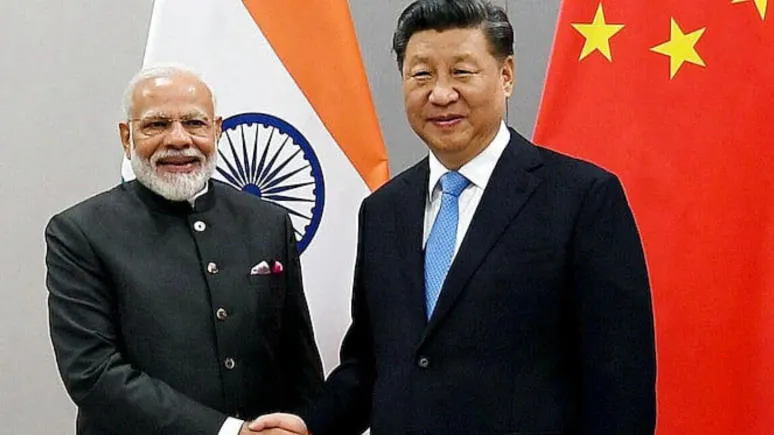President Xi Jinping told Indian President Droupadi Murmu that China and India should build a “Dragon-Elephant Tango” relationship on April 1, 2025. He said it would serve both countries’ interests. Premier Li Qiang also sent a message to Prime Minister Narendra Modi. He stated, “China is ready to work with India to enhance strategic mutual interest, promote exchanges and cooperation and properly handle the boundary.”
China Repeats Call for Cooperation
Last month, Chinese Foreign Minister Wang Yi echoed this idea. He said, “A cooperative pas de deux of Dragon and Elephant is the only right choice for China and India.” He pointed out that ties improved after the Xi-Modi meeting in Kazan in October 2024.
Agreement on Border Dispute Boosts Talks
After India and China signed a key agreement on October 21, 2024, to ease tensions in Eastern Ladakh’s Depsang-Demchok areas, diplomatic activity increased. Several high-level meetings followed, including those between Special Representatives.
Prime Minister Modi also gave positive signals in his interview with U.S. podcaster Lex Fridman. He said that normalcy had returned along the disputed border.
Relations Remain Complicated
Despite these developments, India-China ties remain complex. Both countries compete for power in the region and beyond. China has blocked India’s entry into global groups and deepened ties with India’s neighbors.
Beijing has built strong security relations with Pakistan and gained influence in Nepal, the Maldives, Myanmar, and Bangladesh.
China Eyes India’s Global Ties with Caution
China remains wary of India’s closer ties with the United States and Taiwan. It also dislikes the Dalai Lama’s presence in India. Beijing sees India’s role in the Quad and the India-Middle East-Europe Economic Corridor (IMEC) as moves to counter China.
Moreover, China opposes India’s growing defense links with Southeast Asian nations, especially regarding the South China Sea.
Border Issues Still a Major Concern
The border remains the biggest obstacle. In May 2020, Chinese forces crossed into Eastern Ladakh, breaking past agreements. Both sides later pulled back from conflict zones, but tensions persist. There has been no progress on de-escalation.
Indian and Chinese troops remain heavily deployed along the Line of Actual Control (LAC). Army Chief General Upendra Dwivedi recently described the LAC as “stable but sensitive.” He said India has no plans to reduce its forces. In fact, the army is preparing another division for deployment in Eastern Ladakh.
China Builds Up Border Infrastructure
China continues to strengthen its position along the LAC, from Ladakh to Arunachal Pradesh. It has built roads, bases, and other military infrastructure across Tibet. The region now acts as a defense shield.
China has also built over 720 border villages, called “Xiaokangs.” Many lie close to the LAC and act as outposts. To legitimize control, China passed the Border Defence Law in 2022. Chinese leaders still push to separate border issues from broader ties with India.
Trade Booms Despite Tensions
Even with military friction, trade between India and China has grown. However, China enjoys the upper hand. India relies heavily on imports from China for electronics, chemicals, and machinery.
This dependence creates risks. Supply chains may break during conflicts, trade bans, or pandemics.
India Considers Cautious Investment Access
India may open parts of its manufacturing sector to Chinese investment. But it wants to keep sensitive areas—like telecom, defense, and data-related IT—off-limits. Security remains a top concern.
More Talks and Travel Exchange Planned
On March 25, 2025, Indian and Chinese officials met in Beijing for the 33rd round of the Working Mechanism for Consultation and Coordination (WMCC) on border issues. They reviewed the LAC situation and followed up on decisions from the December 2024 Special Representatives’ meeting.
Both sides also discussed restoring direct flights and reviving the Kailash Manasarovar Yatra.
After the meeting, External Affairs Minister S. Jaishankar said, “India and China will have issues in the foreseeable future,” but he added, “there are ways to handle these without conflict.”
China Reassesses Its Global Strategy
During this year’s “Two Sessions” summit, Chinese leaders reviewed their economic and foreign policy direction. Faced with global shifts and U.S. tensions, China is now focused on tech-based growth. It aims to reduce reliance on global markets using the “China Plus One” strategy.
To protect its national goals, China may make small diplomatic compromises. The current warming of ties with India fits into this larger adjustment.
India Must Stay Vigilant
India should deal with China from a position of strength. A ‘Dragon-Elephant’ partnership may look promising, but caution is necessary. China has a history of ignoring agreements when it suits them.
Therefore, India must stay alert and use a calibrated approach while engaging with Beijing.









